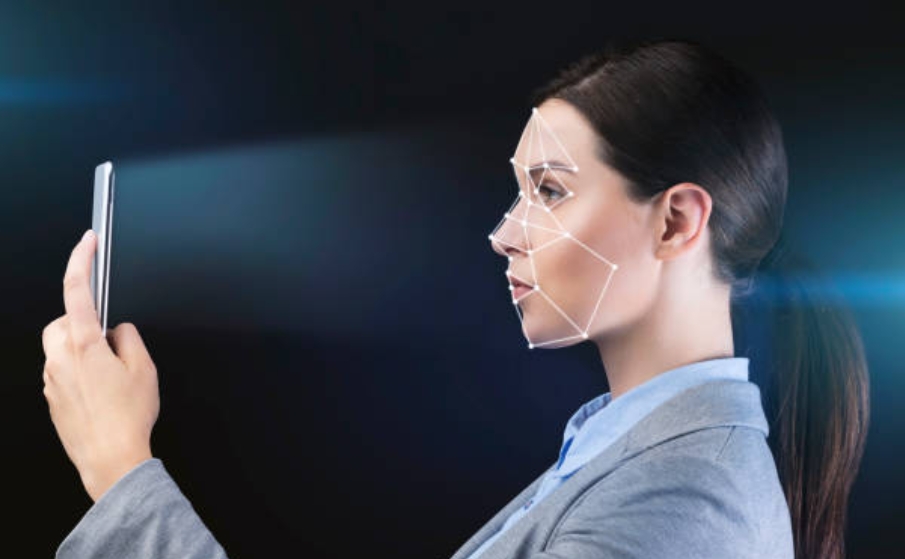Liveness detection is an advanced and sophisticated security feature integrated into a biometric authentication system to confirm the liveness of the claimed identity. By using sophisticated techniques like 3D motion analysis, depth sensing, texture analysis and machine learning, facial liveness detection minutely analyzes the facial features and validates whether the person claiming identity is live or a flat image.
Many industries globally are implementing the technology to ensure accurate ID verification, streamline banking transactions, secure access control, seamless customer onboarding, and integration in emerging technologies. Biometric liveness detection operates through a combination of hardware and software techniques to precisely ensure the liveness of the presented identity, significantly reducing the risk of fraudulent activities.
Hardware Components Integrated in Facial Liveness Detection
- 3D liveness detection utilizes specialized infrared (IR) cameras and high-resolution cameras, that capture detailed and high-definition images of the person seeking login to systems or services. These images are matched against the registered identities to validate authentication of the identity.
- Smart devices like Apple’s Face ID use dot projects to create a 3D map of the user’s face by injecting thousands of dots, making it easier for the solution to effectively discern a real face from a fake image or video.
- Depth sensors are also integrated into liveness detection technology to evaluate the in-depth information of the facial landmarks. The hardware technique analyzes facial features like the depth of the mouth, the shape of the nose, the contour of the jawline, the distance between both eyes, and the distance from face one end to another.
Software Techniques Deployed in Facial Liveness Detection
Numerous advanced and sophisticated techniques are integrated into 3D liveness detection to enhance the accuracy and efficiency of the technology.
- 3D face mapping, texture analysis, blink detections, and head movements are extensively evaluated to confirm the liveness of the claimed identity.
- When a user is seeking access to smartphones or tablets, the user comes in front of the camera and is required to perform certain actions like blinking, smiling, or moving his head in the asked direction to ensure that only genuine individual is granted access to the smart devices and fake identity is restricted in real-time. A genuine individual can perform subtle movements or express micro-expressions, on the other side mask attacks, or spoofed identities can’t promptly perform the asked movements, discerning fake identities from real persons.
- The advanced technology also minutely analyzes the skin texture like skin color, tone, or pores, which are hard to replicate in a 2D image. Furthermore, by deploying dot projectors and depth sensors, 3D liveness detection precisely generates a 3D map of the user’s face differentiating it from a 2D flat image or mask attacks.
Recognition of Other Biometrics in Smart Devices
Besides facial recognition, smart devices authenticate users based on fingerprints or voice patterns. These biometrics are often combined to develop multi-modal biometrics for instance smartphones require users to scan their face and fingerprints simultaneously to ward off any spoofed attempts. Frequently face and voice recognition are performed together, adding an extra layer of security and offering dual confirmation of the identity.
Fingerprint sensors and voice recognition software are also integrated into liveness detection technology to accurately authenticate users based on their unique fingerprints and voice patterns. Users find it increasingly simple to unlock their smart devices by scanning their fingerprints, faces, or voice patterns, streamlining authentication procedures, and eliminating the need to remember passwords. Accurate verification of users is directly linked to a lower risk of fraudulent activities as fake identities and spoofed attempts are warded off in real time.
How Liveness Detection Enhances User Convenience
3D liveness detection aims to improve user experience by providing a seamless and user-friendly authentication approach, reducing the delay and validating identity expeditiously. Moreover, users prefer convenient methods that are easily accessible for all, as smart devices are used daily, requiring straightforward processes.
Modern liveness detection technology integrated with artificial intelligence and machine learning verifies the identities in a matter, enhancing user satisfaction and improving the overall device experience. Most crucially, liveness detection is fairly accessible to all users particularly those with disabilities, making it easier for them to prove their identities by simply scanning their faces and gaining access to the devices.
Security Implications
Biometric liveness detection emerges as a beacon of security, validating the identity of genuine users and flagging spoofed identities in real time, minimizing the potential threats of unauthorized access into the systems. Matching the claimed identity against the registered databases and looking for any anomalies or inconsistencies can effectively enhance the accuracy of the technology, reducing the risks of false positives and false negatives.
Privacy concerns are often raised about who has access to the biometric data and what are the privacy policies regarding the security of the data against data breaches. Developing transparent and affirming the users that their sensitive information is protected against spoofed attempts can effectively mitigate the privacy concerns.
